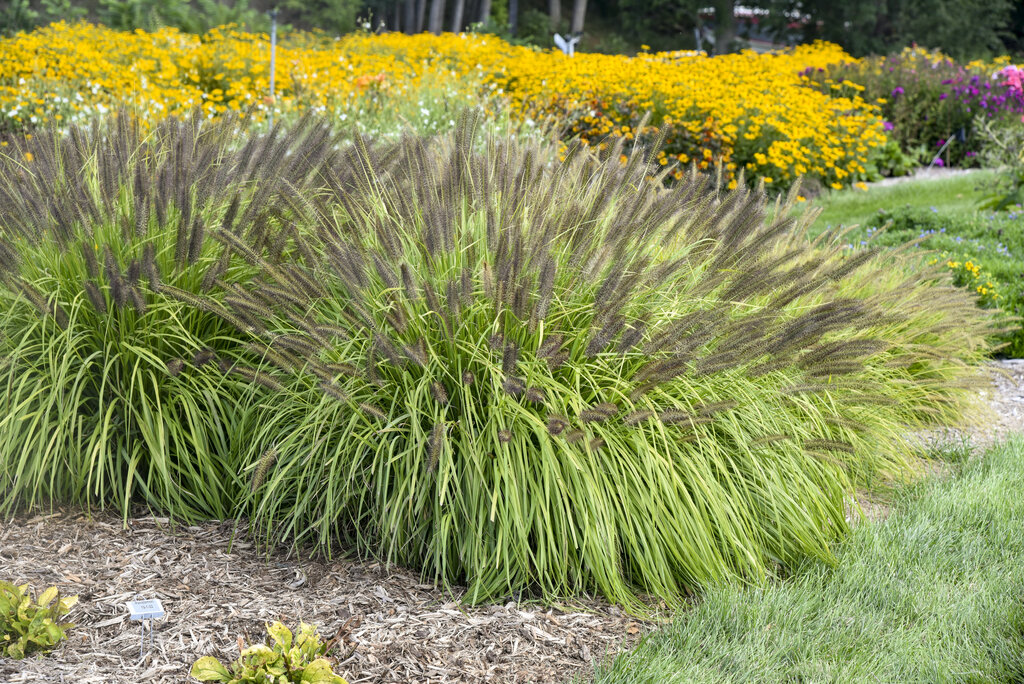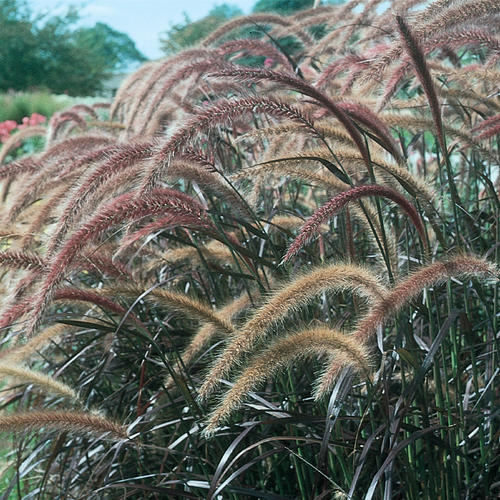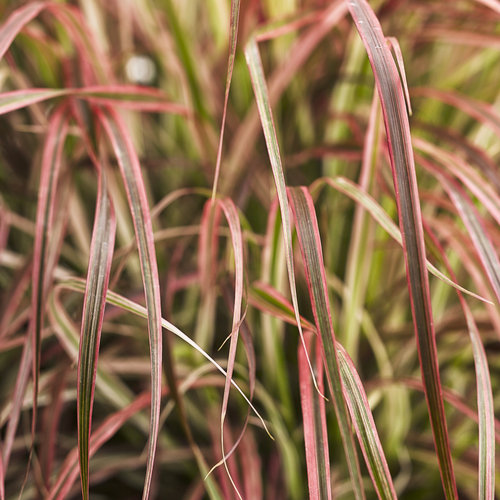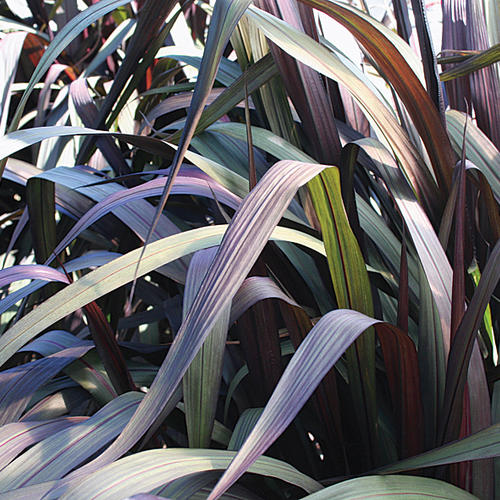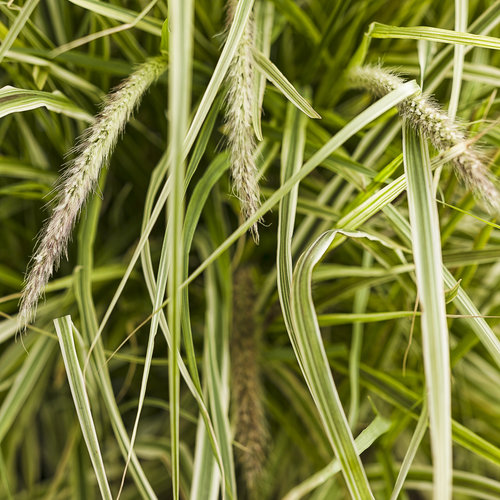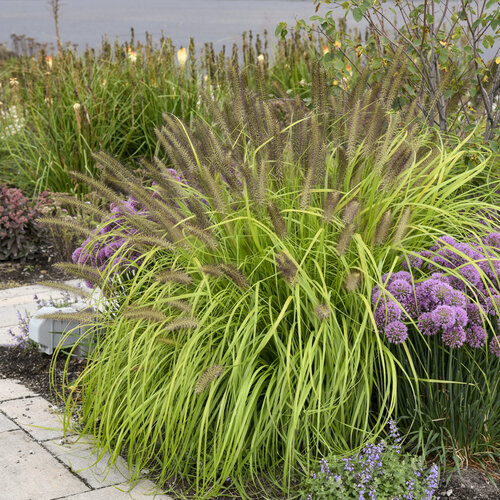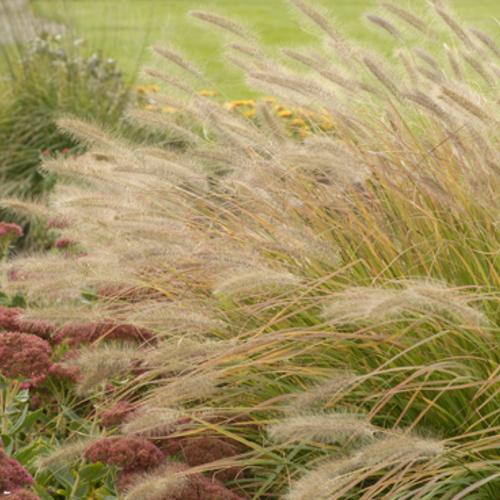Fountain Grass - The Ultimate Care Guide from Proven Winners®
This warm-season ornamental grass is easy to care for and versatile in the landscape, providing late-season texture and color
Buy fountain grass - Order online and have them shipped right to your door
Ornamental grasses, with their strappy foliage and showy flower plumes, add soft texture and graceful movement to the landscape. Depending on which type you choose, fountain grass (Pennisetum) can be a deciduous warm-season perennial grass or an annual grass with an elegant mounding habit and cascading fountain-like foliage. Feathery bottlebrush flower spikes provide late-season interest, blooming from summer into fall.
Fountain grass is low maintenance and undemanding, tolerating a wide range of growing conditions. Plants will quickly form a highly developed root system, making them resilient once established. With varieties in a range of colors and sizes, they can be planted in mixed borders, beds, containers, rock gardens, curbside strips and mass plantings.
PLANTING & CARE OF FOUNTAIN GRASS
How to plant: Choose a site with at least 6 to 8 hours of direct sun and well-draining soil. Follow these steps and space plants 1 to 4 feet apart, depending on the variety.
- Loosen the soil in the planting area to improve drainage.
- Dig a hole twice as wide and slightly deeper than the root ball.
- Remove the grass from its nursery container and tease out roots if potbound.
- Set the plant in the hole with the top of the root ball level or slightly higher than the surrounding soil to allow for settling.
- Backfill the hole with soil, tamp down slightly to remove air pockets and water well.
- Water plants regularly until established.
Soil: Fountain grass can tolerate a wide range of soils, but prefers amended soil with good drainage. When growing in containers, use a high quality all-purpose potting mix. Make sure containers have adequate drainage holes.
Watering: Fountain grass performs best with regular watering. Allow the soil to dry out a bit between waterings and water again when the top 2 inches of soil feels dry to the touch. Water more often during heat or dry spells. Plants in containers will need water more often than those in the ground.
Fertilizing: Pennisetum, like most other ornamental grasses, needs little or no supplemental fertilizer. In spring, mulch around the base of plants with a layer of compost to replenish soil nutrients.
Find more on caring for ornamental grasses.
TRY THESE PROVEN WINNERS® VARIETIES
Fountain grass comes in a range of sizes and colors. Try some of these varieties in your yard:
Annuals
Annual varieties of fountain grass are grown and enjoyed for a single season, then replanted new each spring. Their vigor and durability often makes one think they must be able to survive the winter, but in fact, they are quite cold sensitive and their roots won't survive a freeze.
|
|
|
|
Perennials
Perennial varieties of fountain grass are far more cold hardy than annual varieties. They survive the winter in zones 5 through 9 and the clump gets a little bigger each year that it returns in your landscape. Though they are slower to mature than the annual types, you can enjoy them for many years without needing to replant. Dividing the clump every few years will keep it healthy, with the bonus of having more to plant around your landscape.
|
|
FOUNTAIN GRASS FAQs
When to plant fountain grass?
Perennial fountain grass can be planted from spring to early summer, in late summer, or as late as early fall. Wait until all danger of frost has passed in spring. If planting in the fall, be sure to plant at least 6 to 8 weeks before your first average frost date so it has ample time to root in before winter. Since annual varieties take some time to start growing in the spring, you may not find them for sale at your local garden center until late spring or early summer.
When to cut back fountain grass?
Plants can be cut back in fall if you want to tidy up the garden, or in late winter to early spring before new growth emerges if you want to leave them for winter interest.
How to trim fountain grass?
For perennial fountain grass, gather the foliage together and tie it into a bunch. Using a sharp pair of pruning shears or hedge clippers, cut plants about 4 to 6 inches above the soil.
Does fountain grass come back every year?
Perennial fountain grass varieties will come back in the following growing season if they are hardy in your zone. Annual types will die each year in colder zones and need to be replanted for the new season.
How big does fountain grass get?
Fountain grass height varies, with dwarf varieties reaching just 1 to 2 feet tall, while the largest varieties can grow to 6 feet tall or more. Be sure to read the label carefully before you buy.
Is fountain grass a sun or shade plant?
Fountain grass is a full sun plant, performing best with at least 6 to 8 hours of direct sun per day.
Where is the best place to plant fountain grass?
Choose a site with full sun and well-drained soil.
Is fountain grass invasive?
Fountain grass is listed as an invasive species in Arizona, California, Florida, Hawaii and Nevada. However, our breeders watch carefully for reseeding throughout the breeding process and do not choose to introduce any varieties that are heavy reseeders. We are gardeners too, like you, and wouldn't want that for anyone's garden!
Is fountain grass a perennial?
Some species are perennial, while others are annual in all but the warmest regions.
How fast does fountain grass grow?
Dwarf types are slow growing, reaching 1 to 2 feet tall and wide. Faster-growing types can reach 4 feet tall or more in a single growing season.
Find more commonly asked questions about ornamental grasses.
LANDSCAPING IDEAS
There are many ways to use fountain grasses in your landscape. Here are some ideas:
- Plant a smaller variety along a pathway as attractive edging.
- Use a small to medium grass as an upright element in a container in combination with other plants with similar growing needs for a “thriller, filler, spiller” effect.
- Mass annual fountain grass in beds by itself or in combination with bedding annuals such as petunia, marigold, verbena, calibrachoa, creeping zinnia or fan flower.
- Use a taller variety such as Vertigo as a quick-growing screen along a fence or property line to create privacy.
- Plant fountain grass in a large urn or other decorative container as a focal point to adorn a sunny apartment balcony, deck, home entryway or rooftop garden.
- Combine perennial fountain grass with other perennials with late-season interest such as black-eyed Susan, coneflower, goldenrod, Joe pye weed, aster, mums, salvia, sedum, and other warm-season grasses for dazzling fall color.
- Soften the hardscape of patios, pools, pathways and rock walls with the textural interest of fountain grass.
- Plant fountain grass in a row as low hedging or screening between garden areas.
- Mass fountain grass along a slope for a low-maintenance solution for erosion.
Find more ornamental grass landscaping ideas here:
5 Uses for Ornamental Grasses in Your Garden
Ornamental Grasses for Inspired Designs
FOUNTAIN GRASS COMPANION PLANTS
Combine fountain grass alongside other plants with similar cultural needs of full sun and well-draining soil.
For mixed borders, plant perennial Pennisetum with:
- Pugster® Amethyst butterfly bush
- Tuscan Gold™ false sunflower
- Rock ’N Round® ‘Pure Joy’ stonecrop
- Summersong™ Firefinch™ coneflower
For beds, mass annual fountain grass alongside:
For containers, use a small to medium-sized annual fountain grass as an upright thriller element in combination with:
- Whirlwind® White scaevola
- Truffula™ Pink gomphrena
- Superbells Magic® Pink Lemonade™ calibrachoa
- Lemon Coral® sedum
Find more fountain grass container recipes.
Find more ornamental grass companions.
Buy Proven Winners plants:



